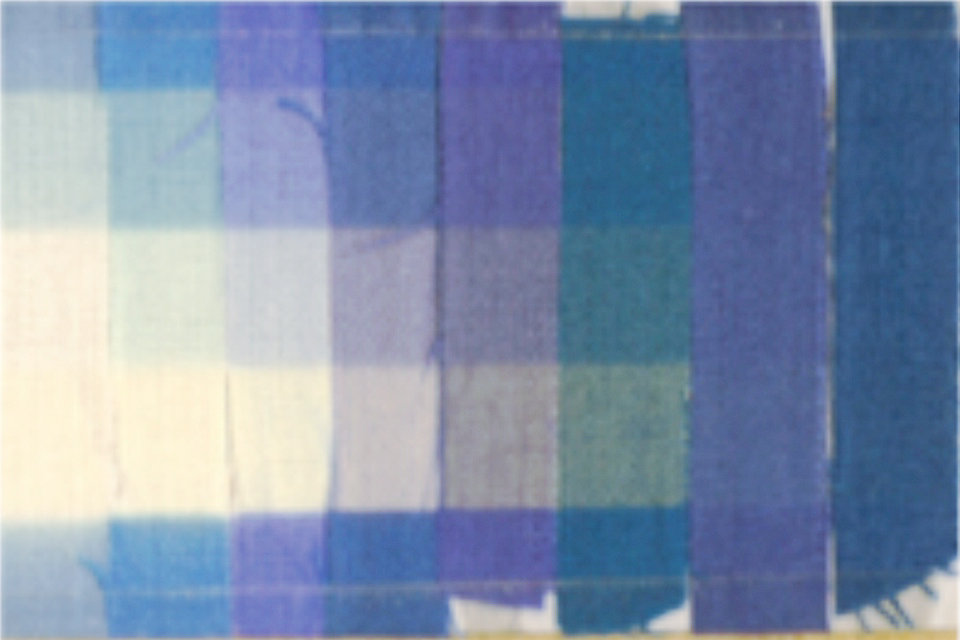Blue Wool Scale


The Blue Wool Scale measures and calibrates the permanence of colouring dyes. Traditionally this test was developed for the textiles industry but it has now been adopted by the printing industry as measure of lightfastness of ink colourants.
Normally two identical dye samples are created. One is placed in the dark as the control and the other is placed in the equivalent of sunlight for a three-month period. A standard bluewool textile fading test card is also placed in the same light conditions as the sample under test. The amount of fading of the sample is then assessed by comparison to the original colour.
A rating between 0 and 8 is awarded by identifying which one of the eight strips on the bluewool standard card has faded to the same extent as the sample under test.
Zero denotes extremely poor colour fastness whilst a rating of eight is deemed not to have altered from the original and thus credited as being lightfast and permanent.
The ultraviolet (UV) radiation in light is responsible for ink fading. As the intensity of UV radiation differs from place to place, the ink fading also depends on place. It will be more in areas with more UV radiation and vice versa. This difficulty is overcome by the bluewool testing method. Absolute values of fading will depend on light intensity. Relative values of fading, comparing the sample with the standard blue test strip, will depend less on intensity. For example, if a pigment is rated as “BW5” it can be expected to fade to the same degree as strip number 5 on a bluewool test card, for any specific light exposure. The method of comparison between the sample and a test strip enables accelerated testing to be carried out under intense artificial illumination.
Different scales
ASTM ASTM International has published standardized pigment tests since 1984, where reviews are presented in scale I-V, where you are excellent and III is considered to be substandard for artistic use.
Blue Wool Scale Another internationally used scale is the Blue Wool Scale, graded from 1 to 8, where 8 is the highest lightness level. It started to be used in the textile industry, then used for ink paints and has increased use for other dyes and pigments.
ASTM I teach corresponds to the two highest Blue Wool Scale levels, 7 and 8.
There are a number of light density scales on the market and in addition scales where light density is only part of the assessment of a color’s resistance. A light seal label on a color pack may also refer to a test on the corresponding pigment without the ready-mixed color being tested.
Several factors affect a paint color
The color accuracy of a paint color depends on several factors, which means that you can not directly translate a pigment’s test results into all the different paint colors it is used in. Secondly, the properties of how the pigment are made and torn to the individual color are influenced, and partly by the other ingredients in the paint , such as binders. Watercolor color is extra sensitive to light, so a good test result performed on a pigment in oil or acrylic can not be directly transferred to the same pigment in watercolor. Lightness is also adversely affected by, among other things, white-colored blend. Colors with the same pigment and the same lightness rating can thus prove to have different lightness in practice.
Source From Wikipedia